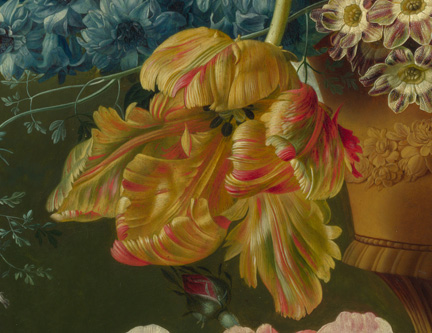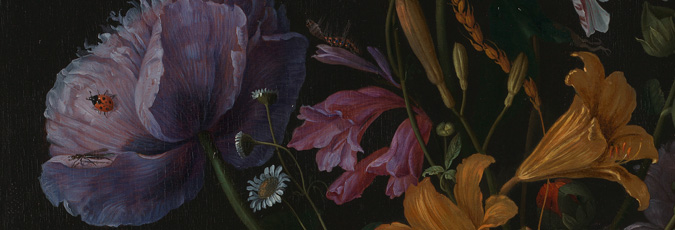Tulips
Today, tulips are readily available in a rainbow of colours – yet once they were considered priceless rarities. Introduced to the Netherlands from Turkey in the late 16th century, tulips were avidly collected and studied by botanists, connoisseurs, artists, and intellectuals. They rapidly became a coveted luxury item, and their vividly striped blooms feature prominently in flower paintings of the 17th century.

In a culture that valued the exotic and unusual, tulips offered intriguing unpredictability: from one year to the next, and seemingly at random, a tulip might suddenly change into a plain or variegated variety. We now know that these flame-like streaks are the result of a virus infecting the plant, but in the 17th century these mutations seemed quite wondrous. Two of the most prized tulip varieties were the ‘Semper Augustus’, which was red with white striations; and the ‘Viceroy’, red with yellow flaming. Both of these costly tulips appear in Ambrosius Bosschaert’s Flowers in a Glass Vase of 1614.
At first, 17th-century scholars and connoisseurs freely exchanged unusual specimens of tulips amongst themselves, but eventually tulip bulbs began to change hands for money. Because tulips were bought and sold as bulbs, buyers had to trust that they were getting what they had paid for. By the mid-1630s, a frenzied demand for the most exotic varieties caused prices to climb to dizzying heights: the so-called 'tulip mania'. Prices collapsed suddenly in early 1637 and never retained their former levels; although tulips continued to be among the most popular flowers grown in the Netherlands.


